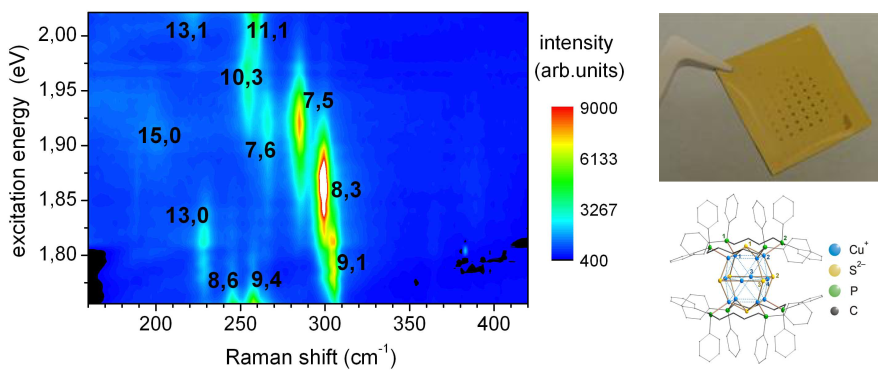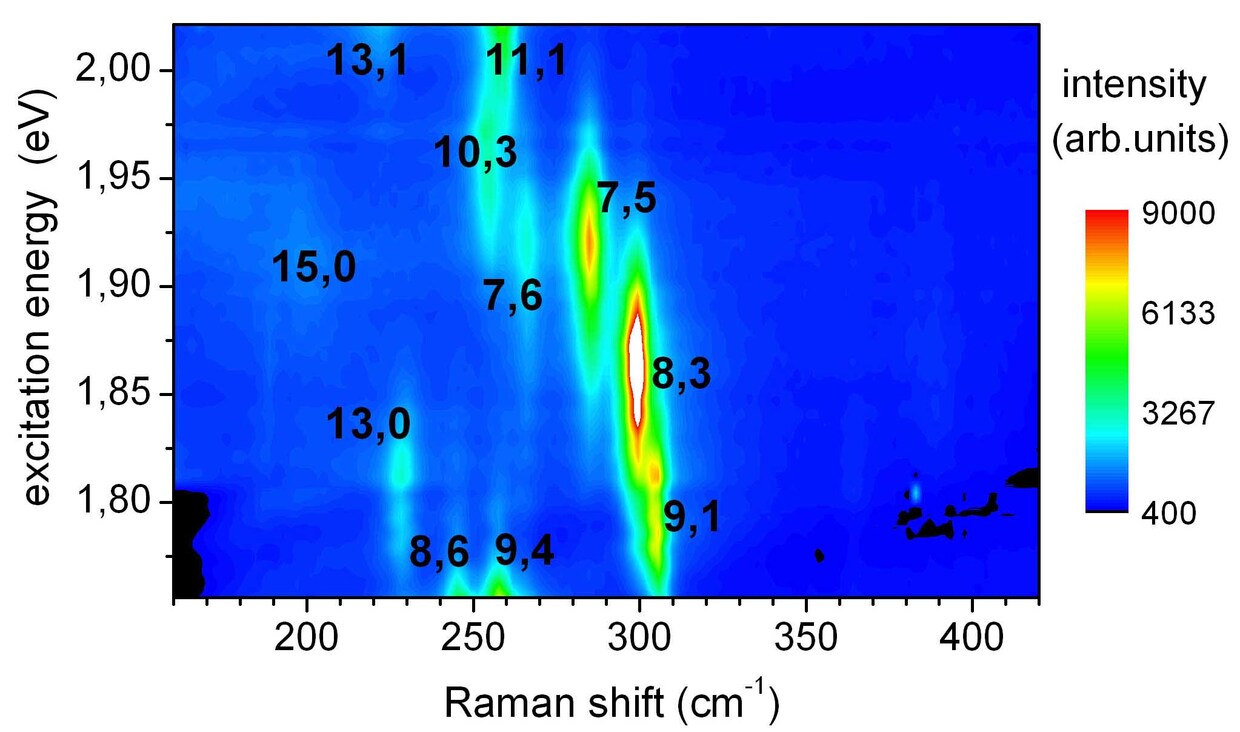Spectroscopy of Carbon Nanotubes
Project Leader
Spectroscopy of Carbon Nanotubes


Laser Safety Officer
Highly enriched samples of semiconducting single walled carbon nanotubes have been prepared by combining polymer-wrapping with size-exclusion chromatography. Using this SWCNTs short-channel transistors were built showing the best performance published so far.
See more ACS Nano, Article ASAP.
Raman mapping (acquiring a series of Raman spectra as a function of continuously tunable laser excitation wavelength) is demonstrated. This an be applied, for instance, to characterize n,m-composition of single-walled carbon nanotubes - an example of materials with an outstanding resonance Raman response.
See more: Anal. Chem. 85, 4554 (2013).
Ligand-stabilized 'Cu12S6' cluster molecules are bright red light emitters i n the solid state at ambient temperature with high photoluminescence quantum yields (>48%) and photostability. These cluster compounds can be a valuable addition to the highly luminescent mononuclear copper-based luminophors which have recently gained increasing interest for their application in organic light emitting devices (OLEDs).
See more Chem. Commun.,50, 11043 (2014).
Efficient and low -cost substrates for surface-enhanced Raman spectroscopy (SERS) are fabricated by the laser-assisted negative replication of a stamp nanostructure onto a thermoplastic polymer and subsequent thin gold film deposition. The replication process can be repeated many times with the same stamp, reproducing nearly defect-free nanostructure features down to ~20 nm.
See more ACS Nano 9, 260 (2015).






